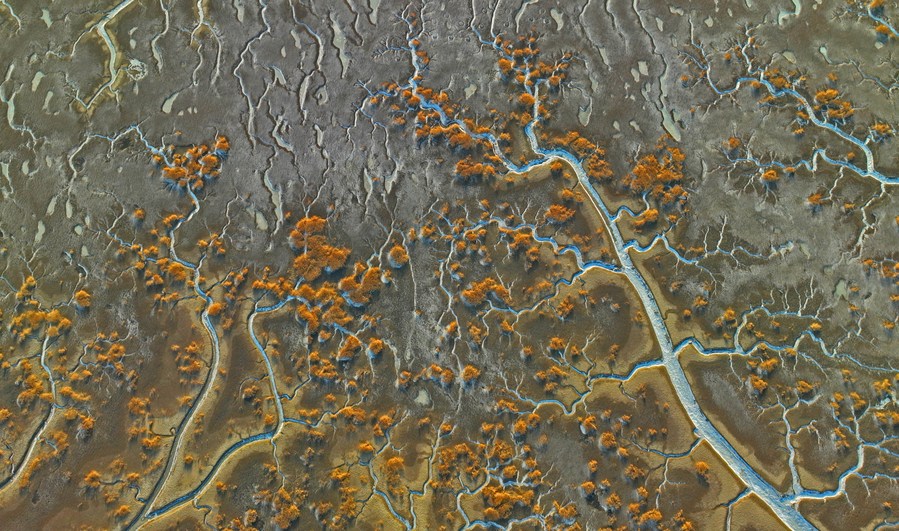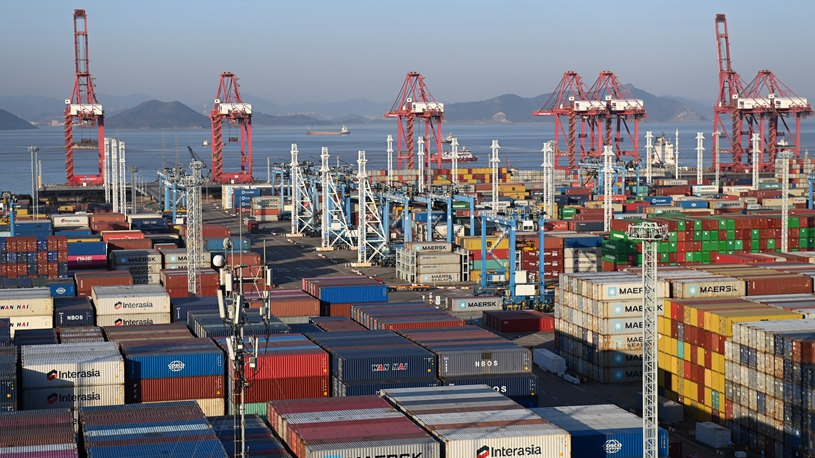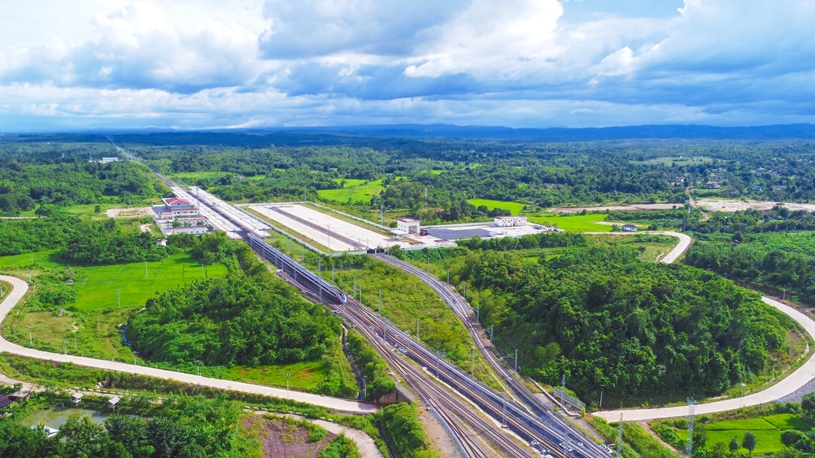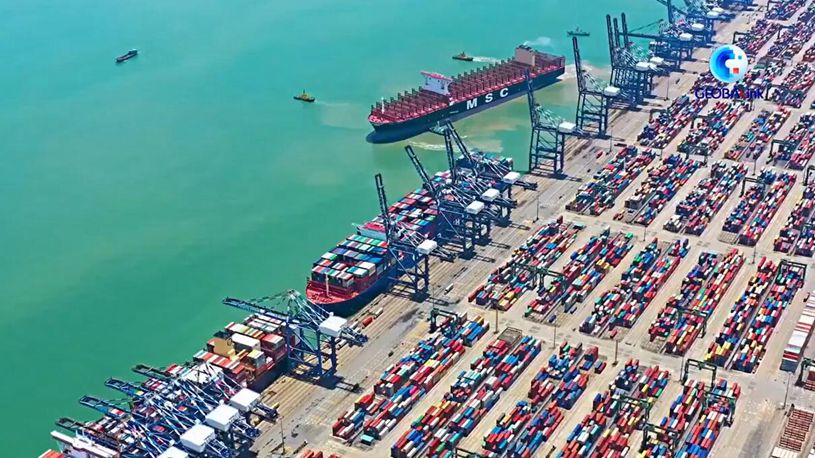
This aerial photo taken on Feb. 1, 2023 shows a view of frozen tidal creeks in the wetland of Liaohe River estuary in Panjin, northeast China's Liaoning Province. (Xinhua/Yang Qing)
BEIJING, Feb. 2 (Xinhua) -- Eighteen wetlands in China were designated in 2022 as Wetlands of International Importance under the Ramsar Convention on Wetlands, the National Forestry and Grassland Administration announced Thursday on the occasion of the 27th World Wetlands Day.
The 18 new sites include Beijing Wild Duck Lake Wetland, the nine turns and 18 bends on the Greater Khingan Range, and Baima Lake Wetland in Huai'an, Jiangsu Province.
Following the expansion, China's Wetlands of International Importance hit 82 sites, covering a surface area of 7.647 million hectares, the fourth largest in the world, according to the National Forestry and Grassland Administration.
February 2 marks World Wetlands Day, which is the date of the adoption of the Convention on Wetlands in 1971 in the Iranian city of Ramsar. The Ramsar Convention is an intergovernmental agreement dedicated to the conservation and rational use of wetland ecosystems.
This year's theme of World Wetlands Day is "It's Time for Wetlands Restoration," highlighting the urgent need to prioritize wetland restoration.
China became a party to the Ramsar Convention in 1992.
As an important participant, contributor, and leader of global wetland protection and restoration, China vows to fulfill its obligations under the Convention on Wetlands, continue to strengthen the preservation of wetland authenticity and integrity, implement national wetland protection planning and major wetland protection projects, bring more important wetlands into the management of nature reserves, and improve the international exchange and cooperation platform.
So far, more than 2,400 wetlands around the world have been designated as Wetlands of International Importance, also known as Ramsar Sites.
Wetlands include natural and artificial water bodies on land, like rivers, lakes, swamps, rice paddies, and some coastal areas. Known as the "kidneys of the Earth" and a reservoir of biodiversity, they can purify water and provide food and shelter to migratory birds. They are among the Earth's top stores of carbon, whose existence contributes to global efforts to reduce carbon emissions. ■












